Everything You Need to Know About Vegetable Packaging Size
Waqas Khan Pitafi 2025-02-21 07:35:14
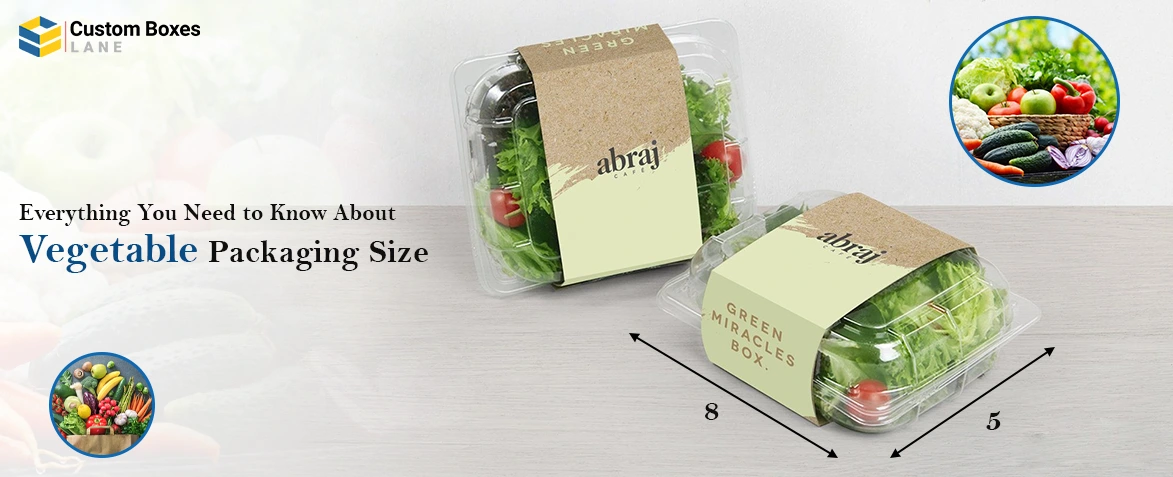
In the fresh produce industry, packaging plays a crucial role in maintaining the quality and safety of vegetables from the farm to the consumer's table. Choosing the right packaging size is not merely a logical decision; but has far-reaching implications for product freshness, shelf life, shipping efficiency, and overall customer satisfaction.
This blog delves into standard vegetable packaging sizes for boxes and the significance of right-sized vegetable packaging. Vegetable packaging sizes for the small, medium, and large boxes are measured in three dimensions (L × W × H). Read this blog to explore these dimensions for your vegetable boxes and which one you should choose to elevate your brand experience!
What are the Standard Sizes of Vegetable Boxes?
Vegetable boxes come in various styles. But the question arises as to which size you should choose for your vegetable box. Basically, there are no certain size limitations to use for different vegetables. However, common sizes available in the market for packing vegetable and fruit boxes are:
Regular Size
The standard size of a vegetable box is 8"x6"x4" inches. Usually, five to seven varieties of local, organic, and seasonal vegetables are packed inside these sized boxes. Onion, potatoes, carrots, turnips, cabbage, and leek are mostly among those vegetables.
Large Size
The size for large vegetable boxes is 12"x10"x6" inches. This site provides ample space for storing vegetables and preserving freshness as well as flavor. Asparagus, berries, cabbage, sweet potatoes, and cucumbers are ideal to pack in large-size vegetable boxes.
Extra Large Size
Vegetable boxes also come in extra-large sizes, 16"x12"x8" inches. This size is large enough to place drain baskets, airtight lids, and organizer inserts to ensure vegetables stay in place and remain fresh for a long-time during shipping.
Small Size
Small vegetable boxes have small sizes having dimensions 6"x4"x2". This size is moderate to pack chilies, tomatoes, cucumber slices, lemon, avocado, lettuce, and garlic. With this size, inside-packed vegetables and fruits fit snugly and remain protected from falling or moving during transportation and shipping.
Recommended Vegetable Packaging Size for Boxes
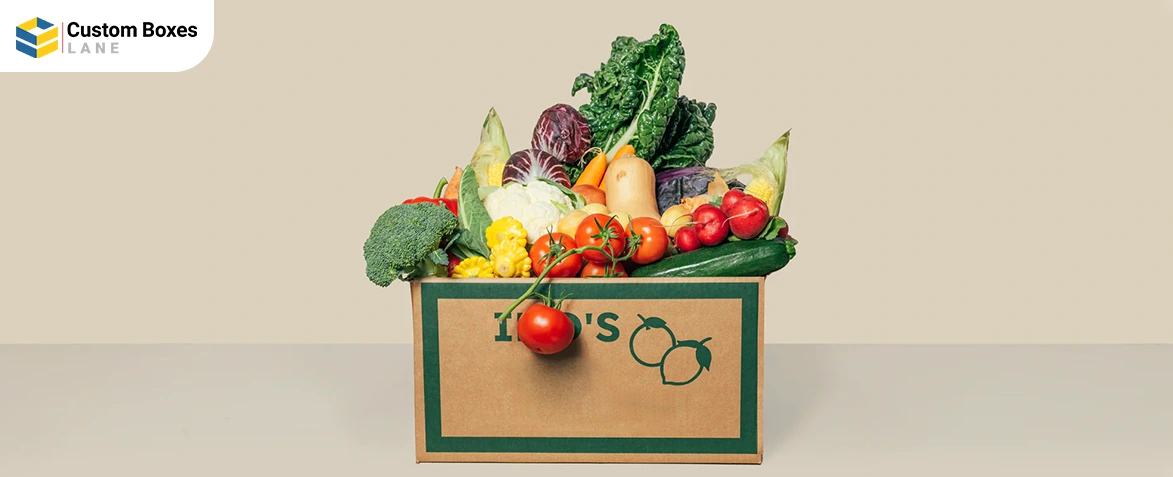
Choosing the ideal packaging size for vegetables depends on various factors such as the type of vegetable, supply chain logistics, and market preferences. While specific size recommendations can vary, several reputable sources provide guidelines to help in making informed decisions for vegetable boxes.
1. United States Department of Agriculture (USDA) Standards
 Standards.webp)
The USDA offers comprehensive standards for the packaging of fresh fruits and vegetables. These standards specify packaging requirements to ensure quality and uniformity in the market. For example, the USDA recommends that potatoes be packaged in fairly tight or well-filled weighing 50 pounds. Because it helps maintain the freshness and integrity of potatoes.
2. Produce Marketing Association (PMA) Guidelines
 Guidelines.webp)
The PMA provides best practices for packaging fresh produce. PMA emphasizes the importance of selecting packaging sizes that align with both consumer demand and supply chain efficiency. They suggest that packaging for bulk vegetables, such as potatoes and onions, should be in perforated boxes ranging from 5 to 10 pounds, facilitating ease of handling and storage.
Things to Consider While Choosing Size for Vegetable Boxes
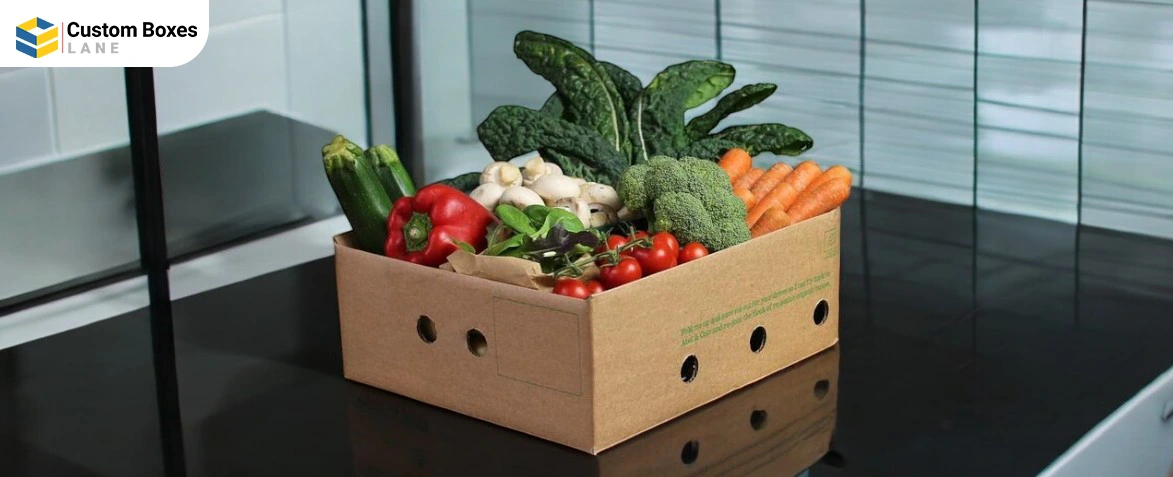
There are certain factors to consider when it comes to choosing a size for vegetable boxes:
Materials
Choosing the right material plays a very important role in keeping vegetables fresh and unspoiled. Kraft, cardboard, and corrugated cardboard are adaptable materials to the desired size. All these materials provide toughness and prevent moisture, ensuring the protection of vegetables during transportation and shipping.
Shapes
The shape of vegetable boxes also greatly influences the packaging size. So mindfully consider appropriate shapes for vegetable boxes to customize them into the required sizes. Commonly used shapes are rectangular, square, and cube. All these shapes align with the required sizes of vegetables and fruits. However, you can design vegetable boxes in custom shapes.
Styles
Choose styles and designs that not only the packed vegetables but also their sizes. Here are versatile yet elegant box styles that are flexible to blend in any style. Harmonize the epitome of these extravagant styles to complement the size of vegetables. Some of these styles are flat-pack box vegetables, hinged boxes, tuck End, two-piece style, and clamshell.
Premium Printing
Opt for printed vegetable packaging options for boxes to boost brand experience and customer loyalty. Offset, digital, CMYK, and PMS add a vibrant visual display for vegetable boxes. Apart from printing, you can use gloss, matte, embossing, debossing, spot UV, aqueous coating, soft touch lamination, and foil stamping on the outside of boxes to captivate shoppers.
Why Does the Right Size of Vegetable Boxes Matter?
Selecting the appropriate packaging size for vegetables creates a huge difference for your business. Explore different reasons why you should not ever underestimate the importance of choosing the right size for vegetable boxes:
Preserve Freshness and Quality
Vegetables are perishable commodities that require optimal conditions to maintain their freshness and nutritional value. Generic packaging can lead to excessive air exposure, causing spoilage and dehydration. Conversely, overly tight packaging may cause physical damage to the fresh produce. Right-sized packaging ensures that vegetables are cushioned appropriately while reducing physical damage and preserving their quality during transit and storage.
Increase Shelf Life
Right packaging sizes prolong the shelf life of vegetables. By minimizing exposure to harsh environmental factors such as oxygen, humidity, and light, right-sized packaging helps in slowing down the natural degradation processes. This not only benefits retailers by reducing spoilage losses but also ensures that consumers receive fresh and wholesome produce.
Offer Cost-Effective Shipping
Packaging size also significantly influences transportation and storage costs. Oversized packaging can lead to inefficient use of space, resulting in higher shipping and storage expenses. Right-sized packaging optimizes space utilization, allowing more units to be transported and stored per shipment, thereby reducing overall costs.
Support Green Environment
In today's eco-conscious market, sustainable packaging solutions are more important than ever. Right-sized packaging reduces the amount of material used, leading to less waste. This not only lowers the environmental footprint but also aligns with consumer preferences for eco-friendly products, enhancing brand reputation.
Enhance Customer Experience
Consumers appreciate packaging that is convenient and easy to handle. Right-sized packaging that reflects appropriate portion sizes cater to consumer needs, leading to increased satisfaction and repeat purchases. Additionally, well-designed packaging can provide essential information about the product, further enriching the consumer experience.
How to Measure the Right Size for Vegetable Boxes?
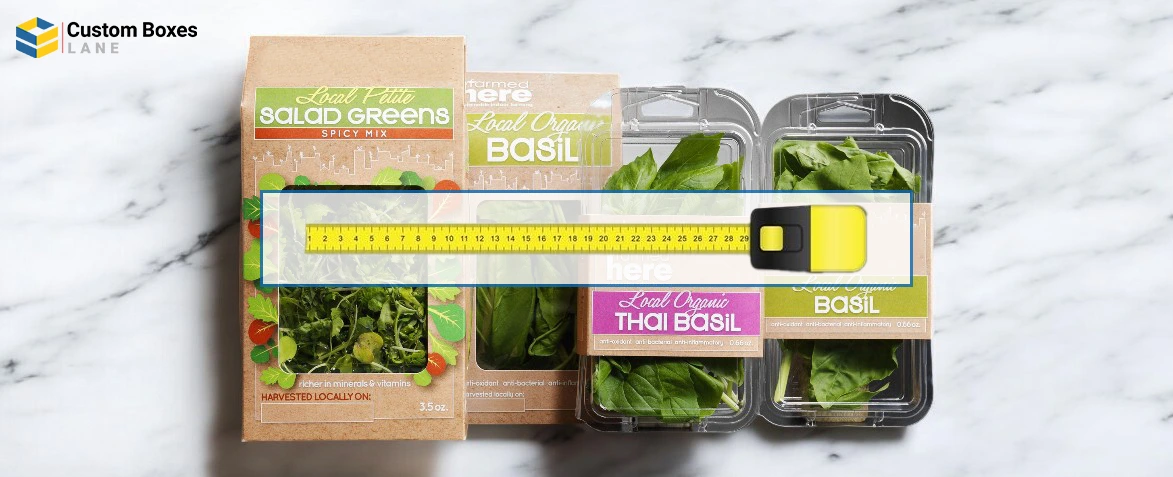
Measure the appropriate packaging size to pack your fruit and vegetable packaging boxes. Here are step-by-step instructions to measure the right size for these boxes.
- In the first step, place the vegetables on a flat surface.
- Once you are done with the alignment and how it looks, measure the space vegetables take up.
- For off-sized vegetables, start by measuring the widest part.
- Then, measure the length from side to side.
- Next, measure the width from back to front and eventually the height from top to bottom.
This simple length, width , height, and height formula i.e., l x w x h helps you to determine the precise size for vegetable boxes.
Why Are Vegetable Boxes Better than Plastic Bags?
There are plenty of reasons why vegetable boxes are far better than plastic bags. Some of these reasons are:
-
Protects Vegetables
The structure of a vegetable box such as cardboard offers supreme strength against knocks and bumps during shipping. These boxes keep vegetables intact by preventing them from moving around during transit. This is especially beneficial for fruits and vegetables, susceptible to physical damage, such as tomatoes and potatoes. However, plastic can’t withstand rough shipping conditions.
-
Prolongs Shelf Life
Vegetables start to release heat, water, and carbon dioxide as soon as they’re harvested. Without proper ventilation and moisture control, fresh produce can spoil quickly from the excess moisture and heat. Vegetable boxes absorb this excess moisture, helping maintain optimal conditions during storage and transportation, unlike plastic bags.
-
Ensures Quality
Boxed produce gives consumers quantity control once they purchase vegetables. Pre-packaged vegetables in plastic bags often limit customers to fixed amounts, which can lead to waste by restricting them to bulk purchases. Moreover, if one produce item in the bag is spoiled, it can ruin the rest of the bag while forcing customers to discard fresh produce. This results in wasted money and vegetables.
-
Supports Sustainability
Both producers and consumers can reuse and recycle the vegetables. Unlike plastic, cardboard, and kraft are also biodegradable packaging materials. Although plastic can take hundreds of years to decompose and contributes to landfills and ocean pollution significantly. However, cardboard can be recycled easily and even added to compost heaps.
-
Offers Convenient Shipping
Plastic bags can move from their place during shipping. This movement may cause potential damage to vegetables and make unloading more challenging. Plus, if you are selling vegetables at a farmer’s market, cardboard boxes provide a ready-made display for your booth. Robust and stackable boxes ease the entire shipping process, ensuring produce arrives safely and efficiently. This benefits both suppliers and retailers while reducing the risk of damage and spoilage.
Which Vegetable Packaging Size for Your Boxes You Should Choose?
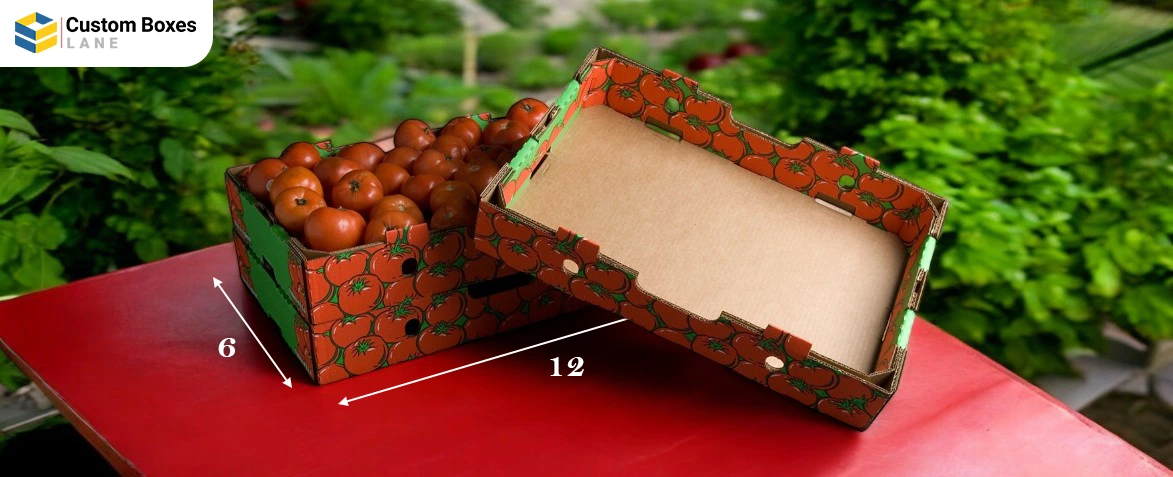
In the competitive fresh produce industry, choosing the right vegetable packaging size is paramount to ensuring food quality and customer satisfaction. But there is no one-size- fit packaging solution for vegetables as it really depends upon the type, weight, quantity, and volume of vegetables.
In this blog, we have discussed in detail the standard sizes and packaging size requirements for vegetable boxes. However, if you are still confused about choosing the right vegetable packaging size for your boxes. Contact us today to discuss how we can help you in choosing the perfect packaging solutions for your vegetable products.

